The Internal Comms Podcast

Episode 56 – IC at the sharp end
In this first episode of season 7 of The Internal Comms Podcast, host Katie Macaulay talks to Jim Shaffer, an internationally recognised business adviser, leadership coach, author and speaker.
Jim’s impressive career has seen him move from US politics to management consultancy, where he’s worked with numerous blue-chip organisations to fix business problems through better communication.
A Fellow of the International Association of Business Communicators, Jim now runs the Jim Shaffer Group – a leadership consulting practice that helps businesses to accelerate results through strategic execution.
Throughout this thought-provoking episode, Jim emphasises that world-class communication is always focused on creating results and adding value. For Jim, a communications lead should be a strategic adviser to the executive, which means getting close to the sharp end of the business.
Among many other useful insights, Jim identifies the four key requirements for successful employee engagement as well as how to make the switch from simply sending out content to delivering demonstrable results.
If you have any thoughts or comments on this episode, please share them using the hashtag #TheICPodcast. And make sure you’re following us @abthinks
Transcript
Katie [00:10]: This episode of the internal comms podcast is brought to you by the AB IC Health Check. This is a brand new, free online tool for evaluating your internal comms activities. Now, you’ve probably seen, you’ve probably used, these online diagnostic tools before. Let’s be honest, they can be a little lightweight, rather rudimentary, not always worth the effort of completing.
We wanted the AB IC health check to be genuinely useful. So, we designed it to be thorough. How does it work? The tool takes you through a series of questions in six categories: insight and understanding; strategy and planning; channels; content; measurement; and professional development. Now my advice is, don’t rush through these questions. Make time to sit down with a drink of your choice and work through your answers – you’ll need a good 15 minutes.
At the end, once you’ve entered your details, your bespoke report will land automatically in your inbox. This will give you an assessment of where you are today, in terms of your internal comms activities. Plus, the report will be packed with insight, advice, and practical hints and tips for what to do next, whether you’re ahead of the game, or just starting out. So, what are you waiting for? Head over to AB comm: abcomm.co.uk/health. Get a free, fresh, expert assessment of your work and take your internal comms to the next level. That website address again: abcomm.co.uk/health.
And we’re back! Welcome to a brand new season of The Internal Comms Podcast with me, Katie Macaulay.
Every fortnight, I’ll be sitting down with leading lights from the world of communication, business and academia. My goal? To tease out smart thinking, fresh ideas and new tactics for improving workplace communication.
My guest today is Jim Shaffer – an internationally recognized business adviser, leadership coach, author and speaker.
While at the management consulting firm Towers Perrin, now Willis Towers Watson, Jim served as a principal, vice president and global leader of the firm’s change management practice.
He went on to set up the Jim Shaffer Group, a consulting practice that helps organisations accelerate results through superior strategy execution.
Jim’s book, The Leadership Solution, has been called “a practical, common sense look at how leaders use communication to solve business problems.”
I should also add that Jim is a Fellow of the International Association of Business Communicators – a prestigious award that recognises his personal contribution to the comms profession.
So, let me start by quoting you something that Jim wrote recently: “Today’s internal communication functions are primarily cost centers. Their budgets are spent disseminating information to employees which has little to no impact on making or saving money or influencing what’s important to shareholders and customers.”
Now, this is why I was so keen to have Jim on the show. He has spent an impressive career working with a long, long list of blue-chip organisations to fix business problems with better communication. In this episode, Jim explains how to make that switch from simply sending stuff out to delivering demonstrable business results.
Katie [04:28]: So, Jim, welcome to The Internal Comms Podcast. It’s an absolute honour, a privilege to have you on the show. So thank you for coming on.
Jim [04:37]: Well, thank you for inviting me, Katie.
Katie [04:39]: I was wondering where to start. And I know that you kind of began your career in US politics, helping to run well, essentially, political campaigns. And I’ve heard you say that this taught you quite a critical lesson about the real job of communications. So I wonder if we can maybe start by you sharing some of those early lessons that you learned through running political campaigns?
Jim [05:07]: Well, she can, we can certainly start there. But I’d like to start here by saying I first want to thank you, Katie, for all you’ve done over the years to help many communication professionals, improve the results they’re creating for their organisations. Thank you for your contributions. Katie.
Katie [05:21]: Wow. Thank you, Jim. That’s a very kind thing to say. That’s floored me.
Jim [05:27]: I guess we’re finished. Well, let’s, let’s go back to your first question. And you’re absolutely right about my coming out of Kansas State University, I had a dual major in political science and journalism. And I was very much interested in political science and communication. And the first job was as a press secretary to the governor of Kansas. And for a long time, I was sending out stuff to the news media, when they would come in and say you got any information about us? Or what’s your speech going to be today? Do you have a copy of the speech that I can have ahead of time?
And so I saw myself as the person who was sending stuff out, and at a point in time, then we started to look at not only the second term that he was in at the time, but the third term, and then hopefully the fourth term. As a result of that, I kind of changed what I did, and the way I thought. And so I started thinking in terms of this isn’t about getting information out, this is about getting the governor re-elected. This is about a result that we’re trying to create. And that’s when I started to appreciate the fact that communication is not there just to talk, communication should be managed in such a way that it improves the performance of your organisation.
I then went to the National Safety Council in Chicago, where I focused my attention on improving safety by reducing workplace incidents. Before I got there, the communication for the National Safety Council was spending a lot of time just again, getting stuff out. And I said, I think it’s really important that while we have this opportunity to manage communication in a better way, let’s get some results out of it that are greater than the cost of getting those results. Therefore, we’re adding value.
Ever since then, the work that I do at FedEx, Kellogg’s, ConAgra foods, Sara Lee, Honeywell, Hallmark, Mayo Clinic, and on and on, it’s all about focusing on results that matter. The beauty of it is is communication practitioners are now to some extent getting a hold of that, and realising that, number one is that they’re going to be considered more as a part of the organisational leadership. But they’re also going to be making an awful lot more money.
Katie [07:41]: I saw in preparing for the show that you’d written most internal communication functions, simply drain money and rarely enhance the organization’s performance. So this is really why I wanted to have you on the show, Jim, because you’re you’ve got a sort of laser-like focus on ensuring that internal comms actually adds value and contributes to performance. That seems to be a central theme running through all your work, would you say?
Jim [08:10]: Well, I think that’s true. And I think most communication functions are cost centres, most of them are not adding value. Human Resources, a number of years ago, about 20 years ago, started the process of moving from just hiring and firing people and putting together compensation systems to creating workforce capability in the organisations and improving workforce capability. They were doing that 20 years ago, and I’m afraid that communication people have not gotten nearly as far as where the HR people are today.
Most of them are not adding much, much in terms of results and value. One CEO told me, a communication function is worried about all the wrong things. They worry about click throughs, opens, mentions, shares, voice, awareness, retreats, things that have little to no impact on things business leaders care about. So that that’s really where I think we need to go. And I think that the beauty of this kind of a process and this kind of a programme can help people start to see other people can do it so I can do it, too.
Katie [09:08]: So let’s talk about how we make this shift in our everyday work. How do we shift our focus from you know, focusing on just, as you say, sending stuff out activities to something else, which is much more results and outcome based? How can internal comms folks make this shift? I mean, I’m guessing a huge part of this is going to be getting closer to the sharp end of your business. Would that be fair?
Jim [09:35]: It’s a beautiful way to put it – to the to the sharp end of the business. Communication people are just need to think and act differently than they have in the past. And I think there’s a new role for communication people and the people that we’re going to talk about probably a little later in the in the programme – we have examples, many examples now where other people can say I’d like to be like that. She did it. I think I can do it. He did it, I think I can do it.
But I think the role needs to change. It needs to change from the do-er to a strategic adviser, strategic adviser to the leadership. And that means understanding how their business works, lead the leadership’s thinking, come to them and say, ‘Have you thought of this, Susan, the Vice President of Operations’?
Help leaders not only think differently, and lead the way that leaders are thinking, but also help them understand what’s in and out of their industry. What can I do and what I can’t do? What are the kinds of things that are going to help my organisation and our leadership team perform better? Help build strategies that make an impact on the business itself? And so have instead of a strategy that says, let’s get more ABC to get stuff out, look, let’s talk about the impact we’re going to have on the business. I think that is really where people need to go: become a strategic adviser, not a communication practitioner.
Katie [11:04]: You’ve done this in your work for years and years as a as a consultant. And I guess as a consultant, you walk into an organisation, and you’ve got to get to know an organisation pretty quickly. I’m just wondering if you could share with us how you do this and to frame it, to talk about meeting Senator Robert Kennedy. Now there’s a reason for this, because at the heart of this story, is something that he said to you, which was quite – that took you by surprise at the time.
So, take you back to that story to inch you towards talking about a key skill, I suppose in your consultancy work. I hope that makes sense.
Jim [11:41]: Yeah, it makes a lot of sense, Katie. I was the political editor of the K State newspaper at that time. The president of the university invited a lot of professors to into a receiving line to meet with Robert Kennedy. Because I was the political editor and I also had a good friendship relationship with the President, he asked me to participate in the receiving line.
And when I came through the line, just as I was about to come to Senator Kennedy, I came to the president. He said, Jim, I want you to – I want to introduce you to Senator Robert Kennedy. He never did that with anybody else who was going through the line. He let everybody shake hands with Senator Kennedy. But he didn’t pull them out and say, hey, I want to introduce you.
So, he introduced me to the senator, the senator reached over and shook hands. And then he said, Jim, I’ve heard so much about you. And he said, would you mind spending some time after the receiving line is over? And so we did. We went off to a, to the Student Union where lunches were served on your lap. And he said, he just asked a number of questions about the upcoming election. He says, you know, what do you think about people? What do they think about me in general? And what were they thinking about politics, and particularly here at Kansas State? So I had a long conversation with him, probably about an hour, then he escorted me over to the large auditorium where he spoke to the student body. It was a thrilling day for a 22-year-old.
Katie [13:10]: But that point about asking questions, has it been a sort of central theme of your career, working out what questions to ask, listening? It must be such a huge component of successful consultancy, I’m guessing.
Jim [13:28]: Yeah, one of the things is about how you how I use questions in our consultancy work to, as you referred to me the other day, getting under the skin of a new client’s business. And I think honestly, there’s there’s no one way. I think that depends on role and personality and I think, to a great extent, style.
I would recommend to all communication professionals to read Dr Stuart Atkins book, The Name of Your Game. It’s something that I was introduced to, and I live by it to a great extent. I won’t get it go into all the details. But there are four basic styles: supporting/giving, controlling/taking, conserving/holding and adapting/ dealing. And they all have different styles and just think of a controlling/taking would be a competent, bottom-line oriented CEO would be controlling/taking. Somebody who’s in the support role of an organisation is going to be a thoughtful, trusting, idealistic and very loyal person who wants to make the organisation succeed. So those those four styles there are what I use when I’m meeting somebody, and try to identify, okay, what is this person like? And I’ll ask a few questions. And I think within 15 to 30 seconds, I probably know what that style is, having diagnosed a number of times.
And I immediately start asking questions in the framework that I think that person would understand and care about. And so I think it’s real important that you don’t be all about you, when you ask questions. I think you ought to be, in part about the person you’re asking the questions to. I think the style of the person dictates all the questions I ask – what’s the future of the company look like? What are the products and services? How do we increase value? Size of the organisation? What’s the desired state, the current state? How do we close the gaps? What are the barriers?
The kinds of questions that I ask though I ask along the the example of the styles that I mentioned. Let me let me give you an example. One of the early ones that I had was with the FedEx CEO and Chairman Fred Smith asked me to help his communication of people improve company performance. His head of communication and he met with me. And he said, Susan, who is the was the head of communication, is doing a really, really good job. And she’s got some real good ideas, how we can convert some of the things we’ve been doing and start getting some results for FedEx’s corporation that’s worldwide.
And so we started out in Los Angeles, and Susan and I went out to LA and we had a group put together a group of about 15, or 20, people representing all parts of the organisation. And we interviewed people and whatnot, and conducted leadership interviews and that sort of thing. And we came back with some very useful information for Fred.
What I learned was customers were unaware of the FedEx export business, they didn’t even know FedEx was in that business. Two, Sales and Operations didn’t communicate with each other at all. Employees didn’t understand the business, they just went out and did what they were told. And then finally, the incentives for FedEx couriers were focused on get back to the station fast, versus staying and spending time with timely conversations with customers to help build customer satisfaction.
Well, the lesson in this is that communication goes way beyond formal channels, it goes beyond the kinds of things that communication practitioners have had thought of historically. It goes to moving information across an organisation. It moves to reward systems who are telling couriers to do something this antithetical to doing good things for our customers. If you look at FedEx, we increased revenues by 23%, reduced cost by $1 million, and generated a 1447% recur. In five more locations after Los Angeles, we had $6.1 million increase in revenues and a 1550% ROI – return on investment. So I think these are examples of what what you actually can do there to make these organisations a lot better.
Katie [17:44]: This is fantastic stuff, because you’re getting very granular by getting on the ground, doing your research, finding out where the barriers and the obstacles are. You’re using communications to then really drive performance, which is, you know, it’s the Holy Grail, really, I think for a lot of IC folk.
I do speak to a lot of internal communication teams who are a little frustrated, because they kind of know intuitively they should understand their organization’s business strategy, but they say, oh, it’s not written down, or it’s not clear. Or, you know, there’s 19 priorities. Jim Collins always says, you know, if you’ve got more than three priorities, you haven’t got any priorities if you’ve got more than three.
What do you do if there is no clear strategy? From what you’re saying, you can almost bypass that, because you’re asking very open questions about what success looks like. And I’m guessing most business leaders can answer that question without having to look at a 140 PowerPoint slide deck of strategy. Would that be fair?
Jim [18:48]: Yeah, absolutely. Absolutely. I think I think that asking … asking questions about strengths, weaknesses, root causes, and potential solutions are very important. And I think that’s just the way we as communication practitioners can learn about the business and strengthen the weaknesses. I ask questions very quickly, and I keep it short, I get to the point, and I get out because they are, they’re valuable people. So I need to demonstrate to them that I value them. So I keep it very tight.
I also to a lot of the speak to a lot of communication people who are frustrated, because the strategy is not written and that sort of thing. What I try to do there, as you pointed out, is to explain to the leaders the downsize caused by a vague or overly complex strategy. So, instead of just send to the communication person to talk to the CEO and say, we just need to be doing this. I think it’s important to explain why we need to do it because as CEO, you may not be aware of the fact that people are not understanding it and we need to we need to do something about that. So that’s number one.
Number two is always stay fact based. I sometimes see communication people get very emotional, have emotional conversations. I don’t mean they whine and cry. I mean, they just speak from the softer side of business instead of staying fact based. So I always suggest, share your interview comments while protecting the interviewee’s identity. So tell it tell the CEO or the head of operations or manufacturers or whatever. Tell them the facts, the truth, say, quickly, and point to one person that I spoke with out in the manufacturing operation, knowing there’s 200 people out there – so he’s not or she’s not going to guess who it was – so here’s what one said. And from what I can tell, and the other people who I’ve interviewed, that person really epitomises what I think most of the people out in your manufacturing people think.
What I usually get from that kind of a comment is, really, I had no idea. So that’s what a communication person can do, is offer up, I saw something out there, I was able to analyse it, I want you to be aware of it, because I think it can be fixed, and you will be happier when it’s fixed than when it’s broken. So the more fact and business focused you are I think the less you’ll be seen as just another communicator.
Katie [21:21]: You’re also doing a valuable service to any leader that can’t possibly be on the front line, everywhere across his or her business. I mean, you’re providing such valuable insight. And also, I hear a lot of leaders who say to me, well, you know, I only get told what people think I want to hear. Whereas what you’re doing is giving them much more of an unvarnished truth when you go out and do that kind of work, which must be really valuable.
Jim [21:49]: It is.
Katie [21:50]: Let’s talk about measurement and return on investment, that good old ROI question for communications: how do you define return on investment?
Jim [22:01]: Yeah, well return on investment is simply a return on investment. It’s a ratio that compares the gain or loss from an investment, related to its cost. It’s, there’s a simple equation for it, which I won’t get into because nobody is gonna remember it anyway. But it is very simple is basically how much have we gained? And what was the cost of getting the gain? And that’s, that’s really what it tells you.
So I would suggest very strongly that communication professionals should be creating gains larger than the cost of creating them, if not, they’re a drag. And people who are dragging don’t make as much money as people who get rid of the drags and are actually creating a gain. So it’s really, really important that communication, people start thinking in terms of the work that they do on Monday morning, by the end of the day, did you make some gain that’s greater than the cost of creating that gain? Because you want to make sure that the cost is smaller than the gain or if you’re not adding value? It’s really kind of a simple concept is just a matter of, are you adding value by doing something that’s better. And if you get the gain of five, and it only cost you two, you got to gain three. So that’s that’s the value that you created.
Let me give you a couple of examples of the work that we’ve done with this, because I think a lot of communication people might be saying, well, that’s theoretically really very nice. Yeah, yeah. He can say that but is anybody really out there doing?
The first person that came to me one time was Kristin Kelly. Kristen was at Owens Corning. And she had attended a meeting – a lot of people know the name of Roger D’Aprix, who’s written a number of books on the subject and has been sort of the godfather of communication for many years, he happens to be very dear friend of mine, my wife and his wife are good friends as well. So Kristin called and she said, I would like you to meet with my CEO and his top 65 leadership team, because they have monthly meetings or quarterly meetings like that. And we talked about what other companies are doing in this area, and they said why are we missing out on this? And what Kristin said is we shouldn’t be, let’s start doing it too.
So we met with her CEO, and decided to do a pilot. And this is something that I think is really important to everybody who’s participating in this. You don’t have to go out and just go fix stuff. Everything, you know, go and create a pilot. And so we started one in upstate New York, and went into that operation and met with the leadership team. We went out and interviewed people, we conducted focus groups and the focus group people explained why some of the communication wasn’t working from department to department to department. And they just there were breakdowns all over the place, went back to the head of manufacturing and he said I’d had no idea that was what was going on out there in manufacturing operation.
And so we went to work with the the president of that operation and his leadership team, and we brought in people from the plant and over a period of time, we increase productivity by eight and a half percent, we saved $737,400 and generated a 700% ROI. We were only there for one month, the month of September. It was really interesting because we were having these meetings with the leadership and they were starting to realise that was something cool was going on in here.
And some of the members of the Union were poking their heads in and said, can I participate? The interesting thing is, is there was a huge division between the union people and the rest of the people who were non-union. Union people said, I just don’t want to participate in any of this. And they would go into a meeting and they bring their newspapers and they turned their seats around, facing the wall instead of facing the leader. And they open up their newspapers and start reading them. That was their mechanism for saying, you know, we don’t believe any of this.
When we started having the meetings where we were involving people out on the floor, and we started meeting with the leaders, the union people kind of came in and they’d open up the door, can come in, do you mind? And obviously, you know, come on in, sit down. Pretty soon we have the union people back, you know, aligned with the rest of the people and everything was happy ever after. And that’s why we got the kinds of results that we got. So a lot of this is about communicating to bring people together who maybe don’t know they should be together or maybe have a fight with each other like a union non-union kind of environment.
And Bob Kula came to me. I was up in Canada. And he called me and he says, I’ve talked to Kristen Kelly, and she’s told me what she did with her up in upstate New York, and can you help me? And so he said, there was a huge amount of damage over in a operation in Indianapolis, that was a distribution centre, which is a fancy name for a big, big warehouse. And over a period of time, we were able to reduce damage, this was probably about a four-month period. We reduced damage in that distribution centre by 6%. Increased productivity by 16%. Reduced turnover by 27% and reduced the safety incident rate that means OSHA recordable or accidents 35%.
Bob and I sat down with Carol, the, the head of the operation. And we were telling her about what we were carrying out here. And Bob had asked me on the way in from the hotel we were staying in what are we going to do with Carol? He said, I suspect you have an answer. And I looked at him and I that he said you and I can tell because you have a sheepish look on your face. And I said I don’t mean to have a sheepish look on my face. But yeah, I think I got an idea. From all that we’ve we’ve talked about here. So we go into the place. And he said, well are you going to tell me? I said not until he got in there.
So we sat down with Carol. It was just the three of us. And I first question I asked her when we’ve talked about all the accidents and stuff that were going on out there. I said, what does your reward system look like? What are the percentages for what? And she said, well, I really don’t know. I’m gonna have to go back to my office and check. Well she came back out. And she said, I’m embarrassed to say this, but I think we’re, you know, we’re getting what we’re paying for. Because we have a reward system that emphasises productivity at 60%. And speed and productivity at 20% equal. I looked at her, she looked at me. I looked at her again, she looked at me. She says I guess we’re getting what we’re paying for. I said I think so Carol.
So we turned that around and we changed the reward system so that it was equal. This is where another example for communication people. Oftentimes it’s not because we didn’t say something or because we didn’t go out on the plant floor and tell somebody something. The reward system can be communicating powerfully something that is antithetical from what it is that we’re trying to do.
Another one was Shauna [Bradley] at Honeywell, where she reduced the billing cycle by 10 days and eliminated 1.4 million process steps. Courtney Reynolds at ITT Corporation asked me to help her down in Texas. And we were able to improve on time delivery by 50%, sales went up by 30, productivity increased by 7.1, recordable accidents went from 13 to zero. So these are these are all all the kinds of things that communication people when they learn how to do this, and in every case, they asked me, they said, Okay, I’m gonna see how this is done. I don’t want to just go out and try to do it because I’ve written speaker articles or something like that, so my articles aren’t gonna do anyway. Just gonna give you an idea of the concept.
So all these people who’ve done this thing have done it because they went out and they learned the process, they applied it. And I can tell you all for a fact, whoever is listening to this, I can tell you for a fact that the improvement and increases in compensation for communication people who are doing that kind of work is significantly different than the ones who are doing work in the traditional way.
I’m going to give you a real example. One of the people, and I can’t see who it is, she was making $140,000 a year, when she started doing the kind of thing and she’s not one of the people that I’ve mentioned here. But when she started doing what she did, and she created these kinds of examples, I know that she’s a little over 270,000 right now, yes, four years later. But if that is the kind of difference, every person who has done this is making a lot more money, because they’re creating gains in value than those who are not creating value.
Katie [31:01]: What do you think then about IC teams, who at the moment are measuring things like open rates? And I don’t know sharer voice or awareness? Should we just stop measuring these things? Or is it about augmenting our KPI, our dashboard or whatever with more business-orientated measures? What do you think?
Jim [31:23]: Oh, I think they absolutely should be shot. There’s absolutely no reason. They’re counterproductive. I mean, if you think you’re measuring click throughs as opens, mentions, sharer voice awareness, excuse me, I got to yawn for a moment. That has nothing to do – that’s irrelevant. It has nothing to do with running a business. I don’t know who came up with that. Probably somebody who didn’t know much about business, and there have been a whole bunch of people who followed on because they probably didn’t want to work very hard.
So the the fact is, there’s absolutely no known connection between the number of opens and their impact on an organization’s quality, service, costs or speed. So if you’re spending 20% of your time on this kind of silliness, stopped the silliness and start doing the kinds of things that that people out there who are successful are doing. Absolutely, oh sharer voice? Oh, yeah, well, let’s just improve the voice. Oh, cost didn’t go down. Think differently than what you thought before. So focus first on eliminating communication breakdowns that are causing the underperformance, we move those breakdowns, so results go up. It’s a simple concept.
Katie [32:39]: So I’m also thinking, when a senior stakeholder, when a leader comes to you with their latest big change programme or the big initiative, and they say, right, you know, we want a comms plan around this. And I’d like some awareness, please about this big important initiative, that immediately should, you know, you should be wary of an objective that is purely about let’s have some awareness, please. What you’re saying I think is you’ve got to go back to that stakeholder and say, we’ve got to get a much better, sharper, more tangible objective, would that be? Would that be fair?
Jim [33:16]: Katie, I wish I could have said it is as well as you just did. I just learned from you. You’re absolutely right. You just gotta go back when they say they want this, you got to go back and help them think through why they don’t got to have this.
Katie [33:31]: One of the things that as you’re talking, Jim, I’m thinking some listeners might worry about is what gets called root cause analysis. But in research, how can I be sure, or in measurement, how can I be sure that what I did moved the dial, and not other things? Do you think that’s a red herring? Do you think we can waste time worrying about did I really make contribute to that change? And if I did, how much did I contribute to that change? And instead just look at the change and say, you know, let’s just measure the impact of what is now working much better. Sorry, I hope that made sense as a question.
Jim [34:12]: Yeah it makes incredible sense. I think it’s it’s really an issue of not trying to be a one-person seller of communication. I think it’s a matter of taking a managing a process. And a process is going to involve other people. So by the time you create the gains, everybody’s going to know or everybody who has been involved in it is going to know who made those gains. And it’s not going to be just the communication person.
The communication person is leading the way or facilitating the process, teaching the process. And that’s what I was mentioning the one up in upstate New York, we spent a lot of time out on the floor listening to people. I remember I remember one time when on the Kristin Kelly thing again, we were walking across the floor. And somebody came up and said, what are you guys up to? And we started explaining what we were up to. And they said something about, well, you need to come over here because if you want to see a problem that we’ve got, I want you to see this.
And, and I explained to Kristen, I said, this is the sort of thing that we need to be doing. And that is on the floor, listening to the people, they can say things to us that they can’t say, or is afraid to say to anybody else. And so it’s really important that that we help them. And by the time that these things are, quote over, everybody knows that Kristen Kelly took the lead, everybody knows that she involved all kinds of people to make it happen. And so it becomes a team success. It’s not just an individual success.
Katie [35:47]: I love that I love you know, comms acting as the facilitator to bring parties together to solve problems. I think that’s, I think that’s a lovely idea. Can you tell us about one of your clients who developed her own rather bold, I have to say, value proposition for internal comms? I love this story.
Jim [36:10]: Yeah, the woman’s name is Teresa Paulson, she’s turned into a really taught marketing consultant now. Now and she, she had contacted me after I had done work with Bob Kula at ConAgra Foods. And she said, I would like to have a value proposition. And a value proposition is merely a promise of the value to be delivered, I’m going to deliver this value for this amount of price. And she and I met with her president, Gary Rodkin. And we sat down with him and said, we have put together together and I said, Teresa really took the lead on this. But I gave her a little coaching along the way. So pay attention to her, don’t pay attention to me as we have this conversation.
She said, well, we, I put together something and Jim seems to like it. We need to help the company either make money, or save money. If it doesn’t make or save money, we don’t do it. Now, there’s a lot there. Because here you got a CEO who’s sitting there, saying well they’re gonna take care of me because … Remember those things that you did for me the other day and sending the cards down to the such and such and such and such? She said, Yep, we won’t do those anymore.
He’s CEO. He said, really, even though I want it done? Nope, not if we agree to this. If it’s not making money, or saving money it’ss not helping this organisation win. He said, well I think you’ve got something there. And he embraced it. He thought it was great. He went and spoke to all of his leaders and said, this is the way we’re going to do it. This is the way we’re going to communicate. If it helps us make money, we will do it. If it doesn’t help us make or save money, we’re not going to do it. And they live by that. And it gets I’ll tell you what, if I could have a little mark here, I could show you how fast that they’re improvement went up on a chart is a result of doing that because they were spending money they just didn’t generate any value.
Katie [38:11]: I think that’s so important today as well, because I speak to a lot of internal comms teams who are… their biggest problem is what to say no to I mean, their biggest problem is they’ve got too much on their plate. And they know that they have, and they’ve got to prioritise their work. And actually, it’s about opportunity cost. So yes, I can say yes to that. But while I’m doing that, I can’t do these higher value tasks. So by having a proposition like that, you really, you paint the picture of what you’re going for.
Jim [38:39]: You’ve said it perfectly. I think, next time I’ll do it the way you just did it. But you’re absolutely right. If you’ve got it nailed, if you’ve got it, not really but on a wall that says this is gonna drive what we do we either make or save money, then everybody in the organisation starts to think the same way, act the same way. Well, it’s remember what Gary said, well, number what Teresa said. And then pretty soon, that’s the way the organisation runs itself. And that’s good.
Katie [39:10]: Hmm. So let’s talk about employee engagement briefly. I think it’s, it’s worth touching on this point. I’ve heard you say that there are four elements that make up engagement. And I’m keen to ask you about these four elements simply because 31-32 years ago, now, we’ve had this concept of engagement, and many people define it in different ways. So I’d be really keen on your definition of what makes up employee engagement.
Jim [39:39]: Absolutely. For starters, people, people need to share the organization’s values and identify with its purpose. That’s very, very important. Because of this, people have an emotional attachment to the company. They’re proud of their relationship with it. As a result of that people are willing to go the extra mile to make the organisation a success. This is often referred to as the use of discretionary effort – when I have the choice, I’ll pick the right thing to do to help us improve our business.
Now, engaging people requires four conditions. And it’s not easy to do this, but it’s very, very doable. I’ve worked with a number of companies that have done this very, very well. First, what I refer to as line of sight – there needs to be a clear line of sight between what people do and the results they can influence. If I do this, it affects this. They need to understand how they affect goals such as quality, sales, service, costs, productivity, safety, and on and on. They need to know how what they do in their jobs affects the outcomes and contributes to the success of the business that’s line of sight. I understand what I do at the has the and the impact that it has.
Two, autonomy and involvement. People need various degrees of autonomy or the ability to make decisions that influence their work. Who knows best how to do a job, or how to improve a job than the people who do it every day. That’s why a lot of organisations who are high performance organisations are high involvement organisations, they involve their people, because they know how to do their job better than anybody else. And that involvement creates ownership.
The third is information. People need the right information at the right time, so they can make the right decisions and take the right decisions to improve the business. So just having the right information is absolutely critical.
And then finally, linkages. So what what’s in it for me? In other words, how am I going to benefit from it? Well, if I know I’m going to benefit from it, I’m going to activate those other three. People need to understand why it’s in their best interest to help the business succeed. Rewards and recognition are one key answer to the question, what’s in it for me? How will I benefit if I do things that will help my business succeed?
Katie [42:04]: I know you were with Towers Watson, you led the firm’s change management consulting practice. I’m fascinated by change, because it seems to be that all our clients certainly and I think most organisations seem to be facing continuous change at the moment. But in researching this podcast, I saw you made a distinction between communicating to change, as opposed to communicating about change. And that line really caught my eyes or my ears. What do you mean by that?
Jim [42:37]: Well, communicating about change is the why behind the whole thing. Why we need to change based on multiple kinds of conditions – the economy, new products or services in the marketplace, customer requirements – and what we need to do to make those changes. So that’s the big picture that’s driving why we need to be doing something differently. The second is communicating to change is the what that is what do we need to do in order to make those changes. That’s focused on changing goals and measures, leadership style and behaviour, rewards and recognition, technology, communication processes and activities and work processes. So, one is why are we doing this? And the second is, what do we need to do to do it well?
Katie [43:20]: Would it be fair to say that actually, potentially, we spend too much time talking about the why and not enough time talking about how and it’s the how that really makes the difference?
Jim [43:30]: Yeah, I think that’s an excellent point, Katie, because you know, it’s easier to talk about the why? I mean, the why yeah, the what is what’s difficult.
Katie: [43:39] Yeah, exactly.
Jim [43:41]: You gotta get down in the trenches, and you got to make it happen. You got to deliver on your promises, but it’s tough to do the what and that’s, and that’s why I think more people need to focus on the what, and the operations side of the business to make those things happen.
Katie [43:55]: So those quick-fire questions, Jim, the first one-
Jim [43:59]: Okay.
Katie [44:00]: The first one is: what would most surprise people about Jim Shaffer?
Jim [44:07]: I asked my wife what that that would be and she said, what about that horse you used to ride? And I said, I think that I think people would be surprised to know that when I was 12 years old, every day except Sunday, I rode Keri, my Shetland pony, bareback, to deliver newspapers on my paper route. I don’t think I don’t think most people who know me would think that I was ever doing that and I gotta tell ya, I learned from that. Here’s what, here’s what I learned.
One of the first things I learned was on a real wet muddy day. The first time I took Keri down through a long line of houses in the residential area we were. I wanted to make sure I got all the newspapers on everybody’s porches and underneath their covers so that they wouldn’t get wet. But about a third of the way down going down this this road, these front yards, I turned around, I look back, I see, Keri’s heavy feet had been plodding along making deep horse holes all the way down through these front lawns that had just been. They’ve been taken care of and mowed and trimmed and all that. And I think, holy, you know what. I think I better turn around, knock on some doors and say I’m going to fix this tomorrow afternoon. So I think I think that’s probably would be a little bit of a surprise to somebody.
Katie [45:37]: Definitely. I’m sure. I’m sure. So, can you complete this sentence? Or how would you complete this sentence? World class communication is…
Jim [45:49]: Focused on creating results and adding values that matter, period, exclamation point.
Katie [45:56]: Fantastic. You’ve mentioned at least one book already in this podcast and the links will be in the show notes, as you know, listeners, but is there a particular book, it could be a website, it could report, it could be anything you like, but that you think all comms professionals should read.
Jim [46:14]: I think if you read these four books, I think that you would be in good shape. I have to say I would start with The Leadership Solution that I wrote. And the reason why is not because I want you to buy more books, because it’s hard to get to buy anyway. So that’s not the point. The point is, is that if you can get it even a used copy of it, I think it says an awful lot about what communication practice practitioners could be doing. I’ve been told that it has been very useful to them. So I would start with The Leadership Solution.
But you might want to start with Roger’s book, Roger D’Aprix’s book, Communicating for Change, I think is outstanding. It’s a very, very good book.
The third is an absolute gotta have. And that’s The Great Game of Business by Jack Stack. I don’t know how many people are familiar with the concept of open book management. But he started this is in Springfield, Missouri, it’s called the great game of business. And he’s the first CEO of a company that went completely open book. And that means everybody in every part of the organisation knows everything about every long item, financial and operational part of the business. There is no holding back of any information to anybody. As a result of that they’re incredibly successful, because they have so many people actively involved in making the organisation a success. The Great Game of Business, this is a gotta read.
The final one is In Search of Excellence by Tom Peters and Bob Waterland. Or any of Tom’s books? Because I think it puts a grand perspective together. So it’s, it’s sort of looking at excellence, as it has been evolving over the years. And it is, some are gonna say, well, yeah, I read that 20 years ago, or whatever it was, well read it again. I just went through it the other day, because I was thinking about these these different books that are important. But those are the ones that if you only had only had four to do, those would be the ones that I would pick, but I could, for any of you who are interested, go through Katie here, is if somebody wants some other books, or the entire book list or whatever, there’s probably 15 or 20 other books that I would suggest you read after you’ve read these guys.
Katie [48:26]: Fantastic. Thank you so much, Jim, if you could go back in time, what career advice would you give your younger self?
Jim [48:34]: I think there are a lot of things that I’ve learned over the years. And it started out by being around some really good successful people back in the governor’s days. And then with the, the organisations that I work with, I think that that some of the things that I would, I would say are: never stop learning. I score very high on the learning index. And I do learn and I do like to learn.
The second piece is always put your brain to it. And think about the stuff that you’re doing. Is this the right thing to do? Does this make sense? Can I do it? Can I accomplish it? Here’s another side of it that for somebody like me, you can talk about my ego and all that stuff.
But the other piece of it is Be humble. I can’t be I don’t want to be a smart alec. Like I don’t think I’ve ever been a smart alec, but though I want to be humble. I want to honour other people. I want to listen to other people. I want to pay attention to other people because they’re people and they know things that I don’t know. So I want to be humble in that sense.
Another is I want to do things that I’m passionate about and I would hope other people do. I there’s certain things that I’m not I’m kind of bored with maybe and I so I don’t do that. But if I’m excited about helping people, if I’m excited about helping you see an organisation turn around if I’m helping to see FedEx do what it did or Honeywell do what I did, that sort of thing, then I’m going to be, I’m going to keep doing that kind of thing because it’s what makes me happy. It’s what makes me feel good at night when I come home.
And the other thing is that I guess I would say is, listen to your inner self, listen to yourself and all the goods and the bads. And don’t set things aside and say, well, I’ll deal with that on another day. Listen to yourself, pay attention to yourself. Do you like what you hear? And that’s a tough question sometimes.
Katie [50:30]: So, finally, all my guests get a pretend billboard, where you can put on that billboard a message for millions to see. What are you going to put on your billboard?
Jim [50:44]: I thought about this for for some time. And I thought from multiple perspectives to get all the different things that ought to go up there. I came back with something very, very simple. Be kind to everyone and yourself.
Katie [50:59]: Nice. I like it a lot. Jim, thank you so much for appearing on The Internal Comms Podcast. It’s been a pleasure to have you on.
Jim [51:09]: Well, thank you, Katie, very much, you are doing great things for the communication profession globally. It’s nice to have somebody who’s sort of the the rock star in this this kind of business. And so thank you for all you’ve done. Thank you for involving me and for you and your your colleagues out there who may be seeing or listening to this, please feel free in my case, if you’ve got questions or anything, please send them to me.
Katie [51:36]: That’s very kind, Jim. And thank you for helping to professionalise and advance what we do here in Internal Communications.
Jim [51:45]: Thank you very much.
Katie [51:48]: So, that’s wrap for this episode of The Internal Comms Podcast. For the show notes and the full transcript, head over to ab’s website, that’s abcomm.co.uk/podcasts.
And if you found this episode helpful, I’d be immensely grateful if you could give us a review on Apple podcasts – you will be helping other IC pros out there find our show. And thank you very much if you choose to do that.
We have some great guests lined up this season – a really interesting mix of in-house practitioners, advisors and consultants. So, you may want to hit that subscribe button today.
All that remains is to say a special thank you to all of those who reach out to me on LinkedIn and Twitter to say how much you enjoy the show. Your feedback means the world to me and I do try to respond to every comment.
So, lovely listeners, until we met again. Stay safe and well and remember, it’s what’s inside that counts.
Jump to
How political communications shaped Jim’s understanding of comms [05:27]
The current value gap in internal comms [08:10]
How to shift from sending out content to a results-based approach [09:08]
When Jim met Senator Robert Kennedy [11:04]
Questions to get under the skin of a client’s business [13:10]
Communication beyond formal channels [16:39]
What do you do if there is no clear business strategy? [18:01]
Defining return on investment [22:01]
Who out in the comms world is really adding value? [23:27]
Starting with a pilot to test your approach and ROI [24:12]
How an organisation’s policies can undermine comms goals [28:57]
Throwing out traditional metrics to focus on real ROI [31:01]
A new way to look at root cause analysis [33:31]
Theresa Paulson’s bold value proposition for internal comms [35:57]
Jim’s four conditions required for employee engagement [39:39]
The difference between communicating about change and communicating to change [42:21]
Quick fire questions [45:55]
Links from this episode
Take the AB IC Health Check to evaluate your internal comms activities.
Read Jim Shaffer’s The Leadership Solution: Say It Do it – a practical, common sense look at how leaders use communication to solve business problems.
Check out the work of The Jim Shaffer Group – seasoned leadership development consultants devoted to improving strategy execution.
Find out more about the International Association of Business Communicators.
Jim recommends all comms professionals read Dr Stuart Atkins’ book, The Name of Your Game.
Jim’s quick-fire book recommendations:
1) Communicating for Change by Roger D’Aprix
2) The Great Game of Business: The Only Sensible Way to Run a Company by Jack Stack and Bo Burlingham
3) In Search Of Excellence: Lessons from America’s Best-Run Companies by Tom Peters and Robert Waterman
Recent episodes
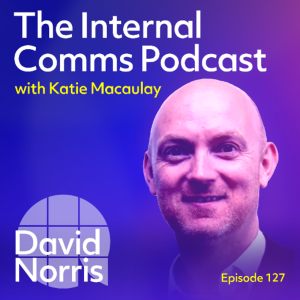
What's really holding you back, with David Norris (#127)
November 19, 2025
‘The qualities that matter most are not technical skills, but inner resources’ is the central thesis of comms coach David Norris’ work. Good news if you don’t want to read ...
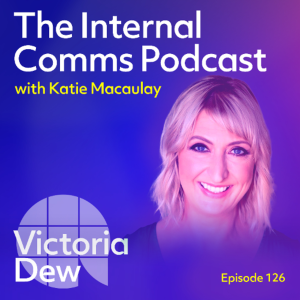
Cracking the frontline code – with Victoria Dew (#126)
November 5, 2025
In this episode, Katie welcomes back the Internal Comms Podcast’s MVP, founder and CEO of Dewpoint Communications Victoria Dew. Back in 2022, Victoria featured on episode 61 of ...
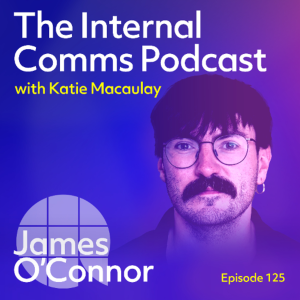
Ryanair’s exercise in efficiency – with James O’Connor (#125)
October 22, 2025
Ryanair flies 200 million passengers to 37 countries in 600 aircraft, a huge operation with a pop-cultural reputation for cheap cheap flights and frank, tongue-in-cheek communicati...

Kicking corporate clichés to the curb with Steve and Cindy Crescenzo (#124)
October 8, 2025
Episode #124 of the Internal Comms Podcast is a joint interview with returning guest Steve Crescenzo and his business partner and wife Cindy. Together, with host Katie Macaulay, th...
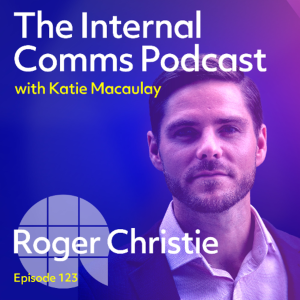
Don’t post, participate – with Roger Christie (#123)
September 24, 2025
In this episode, host Katie Macaulay learns how to get social media right. Tough ask? Not when you’ve got Roger Christie on hand to help. For the past 15 years the founder of ...

The science of happiness (and why we get it wrong) – with Professor Catherine Sanderson (#122)
September 10, 2025
Season 14 of the Internal Comms Podcast kicks off with a conversation about happiness. Host Katie Macaulay welcomes Professor Catherine Sanderson to discuss what really makes us...

Episode 121 – The story behind Bupa's elephant
June 25, 2025
In this episode of The Internal Comms Podcast, Katie Macaulay is joined by Jo Hudson, Group Director of Internal Communication at Bupa. Jo has spent the past 16 years at Bupa, one...
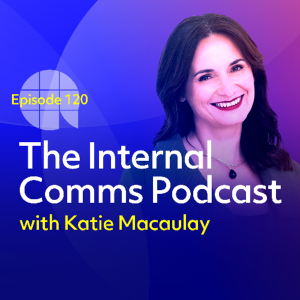
Episode 120 – Walk the line – how to stay in sync
June 11, 2025
In this episode of The Internal Comms Podcast, host Katie Macaulay sits down with alignment strategist and leadership coach Zora Artis to explore a crucial question: how can intern...
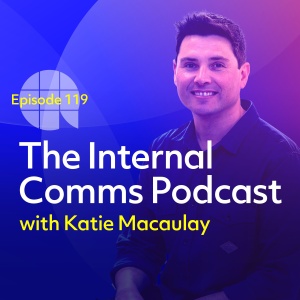
Episode 119 – The suite spot – Microsoft minus the mayhem
May 28, 2025
If the platforms you use at work were built by Microsoft, this episode is essential listening. Katie is joined by Alex Graves, Chief Visionary Officer at Silicon Reef — the peop...

Episode 118 – Satirising the spin – a bullsh*t investigation
May 14, 2025
If you have ever found yourself circling back, touching base, breaking down silos or leveraging strategic synergies — then these guests are speaking your language. Charles Firth...
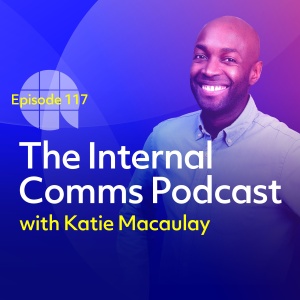
Episode 117 – From humanising a prime minister to empowering the quietest voices
May 12, 2025
What does it take to make one of the most scrutinised leaders in the world feel relatable? And how do we build internal comms that truly include everyone — especially the quieter...

Episode 116 – How to build a remarkable career without a plan
April 7, 2025
Fred Cook’s career proves success doesn’t require a straight line. Now Chairman Emeritus of global PR agency Golin, Fred has spent 35+ years advising world-famous brands – Am...

Episode 115 – Curiosity, creativity & the imposter myth
March 26, 2025
Inspiration is everywhere when you stay curious. That’s the thread running through this episode of The Internal Comms Podcast, where Katie Macaulay welcomes communication, creati...
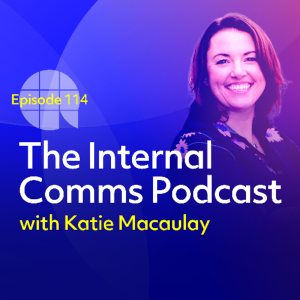
Episode 114 – The credibility code: Become the leader your team deserves
March 12, 2025
What does it mean to be a credible leader? And just how important is that credibility to your team? In this episode of The Internal Comms Podcast, host Katie Macaulay welcomes back...

Episode 113 – Soft skill? Think again: The hard truth about storytelling
February 26, 2025
In this episode of The Internal Comms Podcast, host Katie Macaulay welcomes Jeremy Connell-Waite, Global Communications Designer for IBM, an acclaimed speechwriter and storyteller,...

Episode 112 – From intent to impact: take charge of your career
February 20, 2025
We’re back for season 13 of The Internal Comms Podcast and to kick things off, host Katie Macaulay is joined by Eduvie Martin. Eduvie is Group Communications and Engagement Manag...
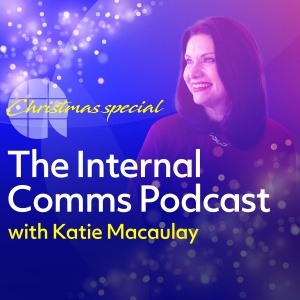
Season 12 – 2024 Christmas Special: nine gifts from the archive
December 18, 2024
In this episode, we mark a big milestone with a gift-wrapped edition of the Internal Comms Podcast. It’s six years since the show launched and, in this Christmas special, host K...
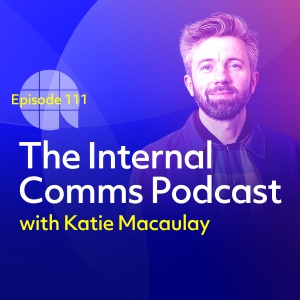
Episode 111 – A creative leader's blueprint for brilliance
December 4, 2024
This week on The Internal Comms Podcast, host Katie Macaulay is joined by a very special guest – AB's creative director, Joel O’Connor. Joel has been with AB for well over a de...
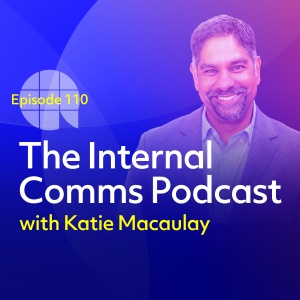
Episode 110 – Navigating the shifting digital landscape
November 20, 2024
This week on The Internal Comms Podcast, host Katie Macaulay is joined by co-founder of Local Wisdom, tech expert and comms leader Pinaki Kathiari. With his rare passion for both t...
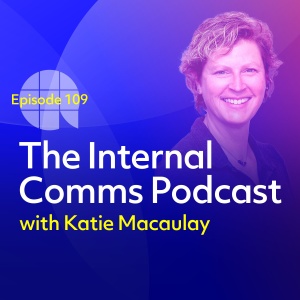
Episode 109 – The business of belonging: A new approach to DEI
November 6, 2024
We all deserve the opportunity to thrive at work. We deserve equal opportunity. We deserve to feel valued and included. That’s what diversity, equity and inclusion (DEI) is all a...
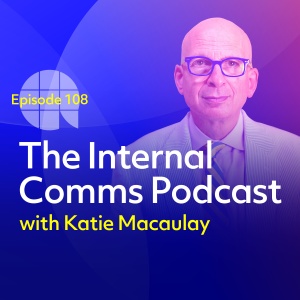
Episode 108 – Seth Godin rewrites the rules of internal communication
October 23, 2024
In this episode, Katie Macaulay is joined by author and influential blogger, Seth Godin. Seth was top of Katie’s guest wish list when The Internal Comms Podcast launched five ye...

Episode 107 – Beyond words: A blueprint for more impactful, immersive IC
October 9, 2024
In this episode of The Internal Comms Podcast, host Katie Macaulay welcomes international internal comms consultant and strategist Monique Zytnik to the hot seat. Monique is the au...

Episode 106 – School of thought: Inside Matt Tidwell’s comms curriculum
September 25, 2024
In this episode of The Internal Comms Podcast, host Katie Macaulay welcomes Matt Tidwell to the hot seat. Matt is a consultant, communicator and educator, and has led comms agencie...
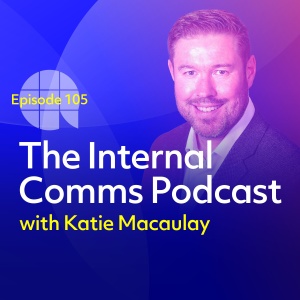
Episode 105 – Reaching the peak of success: IC at Iron Mountain
September 11, 2024
We’re back for Season 12 of The Internal Comms Podcast, and in this first episode, host Katie Macaulay is joined by Senior Director of Corporate Communication at Iron Mountain, N...
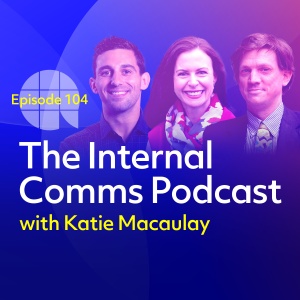
Episode 104 – Communications excellence in times of rapid change
July 31, 2024
McKinsey & Company is one of the world’s most renowned strategic management consultancies. With a mission of striving for “change that changes everything”, its global team of...
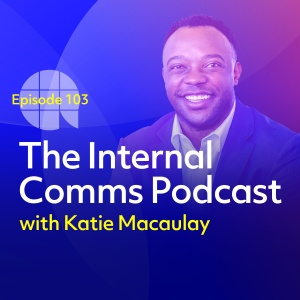
Episode 103 – Say the thing now: Candid conversations at Reddit
July 10, 2024
On a platform where the candid and the curious are king, how do you make sure what’s inside reflects what’s on the outside? Meet Sean Langston, Jr., Head of Internal Communicat...
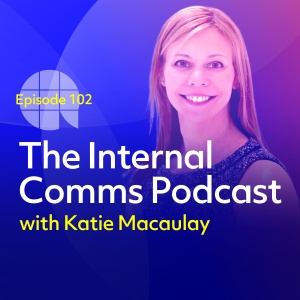
Episode 102 – The sound of success: IC at Spotify, Mastercard and beyond
June 26, 2024
Ever been curious about how some of the biggest brands in the world tackle their internal communication challenges? Well look (or listen) no further. Kerri Warner, this week’s gu...
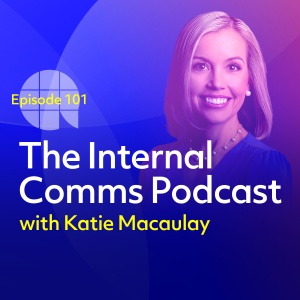
Episode 101 – From complex to clear: Elevate your presentations
June 12, 2024
As internal communicators, empowering leaders to clearly communicate business strategy, important updates and company values is a valued skill. How can we inspire colleagues and le...
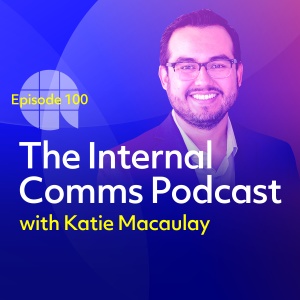
Episode 100 – Meet the super-connector behind #CommsJobs
May 29, 2024
After years running an internal communications team, Daniel Mendez emigrated from Chile to the U.S., where he faced a host of barriers to success. A language barrier. A small or no...

Episode 99 – The communicator’s communicator
May 15, 2024
In this episode of The Internal Comms Podcast, host Katie Macaulay is joined by Linda Zebian. The very first Director of Communications at PR management platform Muck Rack, Linda s...
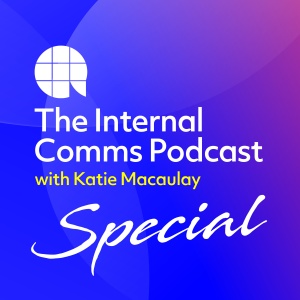
Exclusive reveal: Katie’s IC masterclass
May 1, 2024
Join us for a special episode of The Internal Comms Podcast as host Katie Macaulay announces the imminent launch of her unique on-demand masterclass. With more than three decades ...
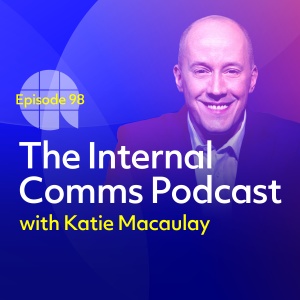
Episode 98 – How to build a powerful personal brand
April 17, 2024
This week on The Internal Comms Podcast, host Katie Macaulay is joined by serial entrepreneur, author, keynote speaker and business mentor Chris Ducker. Chris is a renowned expert ...

Episode 97 – Leaving the ladder down: helping IC pros step up
April 3, 2024
In this episode of The Internal Comms Podcast, host Katie Macaulay welcomes back the show’s first-ever guest, Rachel Miller. Rachel is an internationally recognised internal com...
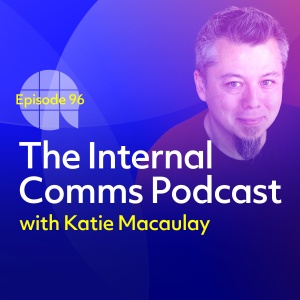
Episode 96 – Inclusion in action: Kindness is the keystone
March 20, 2024
This week on The Internal Comms Podcast, host Katie Macaulay is joined by Global Belonging, Equity and Impact Consultant, and self-styled ‘human-centric technologist’, Bob Wata...
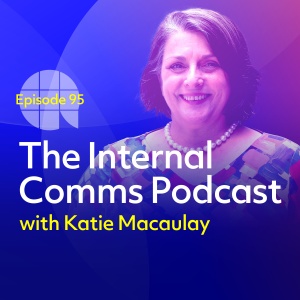
Episode 95 – Mastering your approach to strategic communication
March 6, 2024
This week on The Internal Comms Podcast, host Katie Macaulay is joined by award-winning marketing and communications expert Danielle Bond. Recently retired from corporate life, Da...
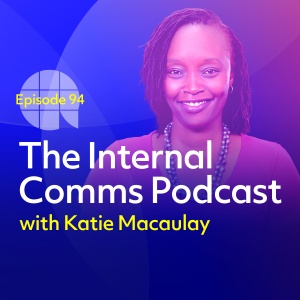
Episode 94 – The stories that shape us
February 21, 2024
In this episode of The Internal Comms Podcast, host Katie Macaulay is joined by leadership communications coach and co-founder of Engage Kenya, Agatha Juma. Agatha credits an emba...
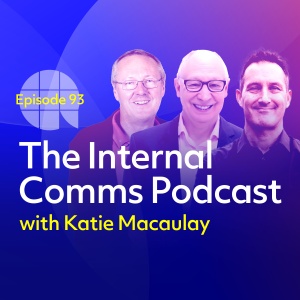
Episode 93 – The sound of success: Why it pays to listen to employees
February 7, 2024
We’re back for Season 11 of The Internal Comms Podcast! And kicking us off with a very special episode, this week host Katie Macaulay is joined by not one, not two, but three gue...
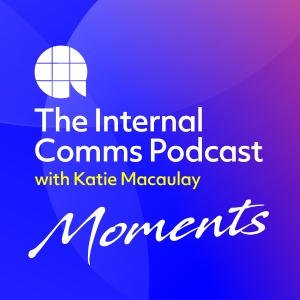
Moment 35 – The four Cs of content: How internal communicators can create comms that land
January 31, 2024
Looking for tips on creating internal communications that land – and stick? In this Moment from The Internal Comms Podcast, Steve Crescenzo shares a few things you absolutely mus...
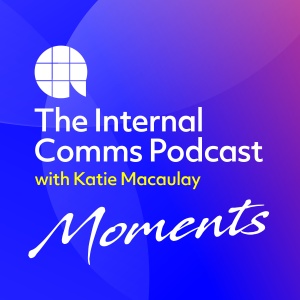
Moment 63 – Are you listening? The power of questions in leadership: Mike Roe
January 24, 2024
“I realised I was probably a pretty crap listener,” Mike Roe tells Katie Macaulay in this Moment from The Internal Comms Podcast. We often go to leaders and start by asking th...
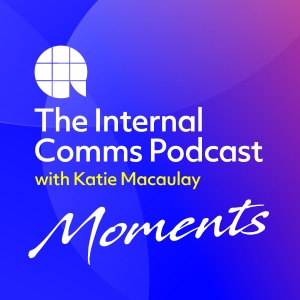
Moment 57 – Language matters: Building two-way engagement at IKEA
January 17, 2024
At IKEA, choosing the right words when communicating with the workforce is everything. Guy Britt, IKEA’s Global Head of Co-worker Comms, tells Katie Macaulay the use of ‘co-wo...

Episode 92 – Revolution coming: How AI is transforming internal comms
December 20, 2023
If you have ever attended one of Shel Holtz’s presentations, you will know that, more often than not, it’s standing room only. Shel has a remarkable ability to anticipate what'...
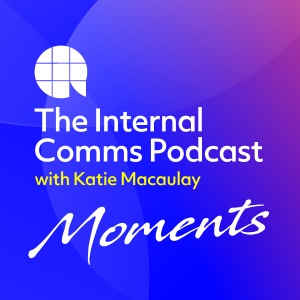
Moment 61 – Human-centric businesses do better: Victoria Dew
December 6, 2023
Does your approach to internal communication have the human touch? It’s essential to the humans you employ, says Victoria Dew, CEO of Dewpoint Communications and an internal com...
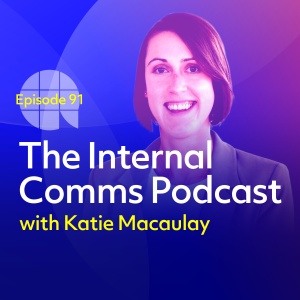
Episode 91 – How to build a one-person IC powerhouse
November 22, 2023
Ever feel like, as an internal communicator, you’re fighting an uphill battle all by yourself? This week’s guest on The Internal Comms Podcast has exactly what you need. Host ...
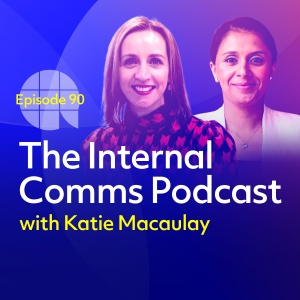
Episode 90 – A shared vision: ED&I and IC in action
November 8, 2023
This week on The Internal Comms Podcast, host Katie Macaulay is joined by Sim Sian, Head of Equality, Diversity and Inclusion at Mitie, and Yvonne O’Hara, formerly Mitie’s Grou...

Episode 89 – Netflix-style IC: Snackable, on-demand and authentic
October 25, 2023
In this episode of the Internal Comms Podcast, host Katie Macaulay is joined by Access Group’s Global Head of Communications and Engagement, Paul Downey. Paul caught Katie’s ...

Episode 88 – It’s fixable: How to tackle hard problems
October 11, 2023
In this episode of the Internal Comms Podcast, host Katie Macaulay is joined by Anne Morriss. Anne is an entrepreneur, author, public speaker, and the Executive Founder of the Lea...
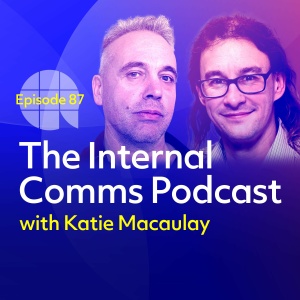
Episode 87 – Tracing the legacy of internal comms
September 27, 2023
It’s often said we must understand the past to build the future, and that sentiment sits at the very heart of this episode. This week on The Internal Comms Podcast we welcome pr...
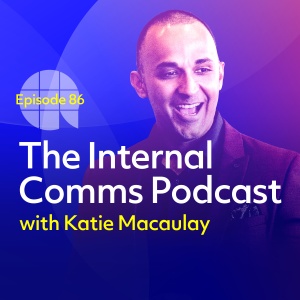
Episode 86 – How to crush your next public speaking gig
September 13, 2023
Season 10 of the Internal Comms Podcast kicks off with one of Katie’s most compelling conversations yet. Shil Shanghavi is a public speaking specialist, storyteller and head of...

Coming soon: Season 10 of The Internal Comms Podcast
September 6, 2023
Our summer break is drawing to a close, Katie has dusted off her mic and we’re ready to launch Season 10 of The Internal Comms Podcast! This season, we’ll be welcoming more o...

Moment 18 – 3% of employees are driving 90% of conversations: Mike Klein
August 30, 2023
In this moment, we catch up with Mike Klein, former political consultant, modern-day communications stalwart, and two-time guest on the Internal Comms Podcast. Mike breaks down h...
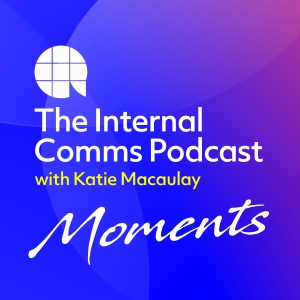
Moment 17 – How we create meaning: Sue Dewhurst & Liam FitzPatrick
August 23, 2023
What’s our one true purpose as internal communicators? It’s the question we’re all seeking the answer to. This moment takes us back to when Katie first welcomed Sue Dewhurs...

Moment 13 – The message must change at each leadership level: Dr Kevin Ruck
August 16, 2023
If there’s one thing we’re clear about at AB, it’s that communication should not be a one-way street. And that’s what this moment is about. We head back to Episode 13, w...

Moment 06 – On tolerance, kindness and being enough: Henry Normal
August 9, 2023
As communicators, we could often do with slowing things down a little. In this moment, Henry Normal – author and co-founder of production company Baby Cow, which he founded with ...
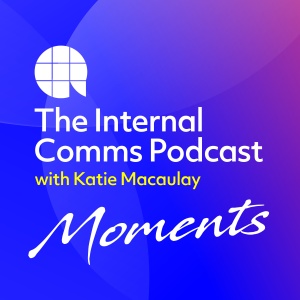
Moment 01 – What happens inside is reflected outside: Rachel Miller
August 2, 2023
Have you heard of an inside-out approach to communication? It’s no secret that today’s internal comms messages seep into the world outside the office walls. After all, anythi...
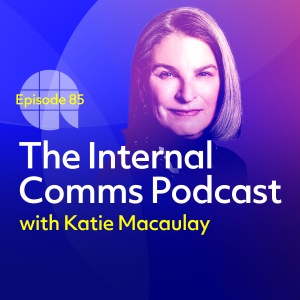
Episode 85 – Lessons from a trailblazer
July 26, 2023
We’re ending Season 9 of the Internal Comms Podcast with a bang this week, as Sally Susman takes to the hot seat for her second appearance. Sally is Executive Vice President an...
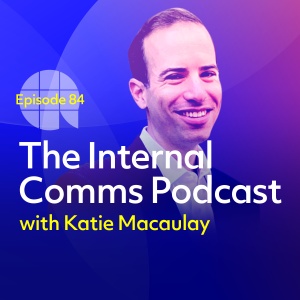
Episode 84 – Ethics in action: Insights from a global compliance leader
July 12, 2023
In modern business, integrity is non-negotiable. As legislation ramps up in lockstep with colleague and customer demands, operating an ethical business in line with global regula...

Episode 83 – ESG: How IC can drive the agenda
June 28, 2023
Define ESG… Well, it stands for environment, social and governance. But can you really define what ESG actually is? Put very simply, ESG is a set of criteria used to evaluate a ...
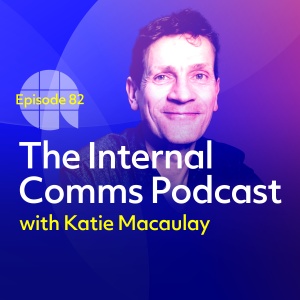
Episode 82 – The truth about resilience
May 31, 2023
It seems everyone’s talking about resilience, the ability to bounce back from misfortune or adversity. But as Bruce Daisley explains to host Katie Macaulay, there’s something w...
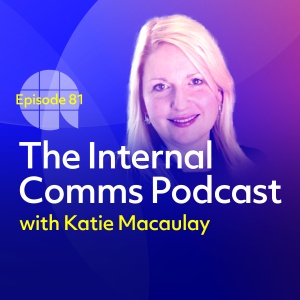
Episode 81 – Unilever: Inside a global success story
May 17, 2023
With over 130,000 colleagues, and a 100-year history, Unilever is one of the world’s largest consumer goods companies. And this week on the Internal Comms Podcast, we get a peek ...
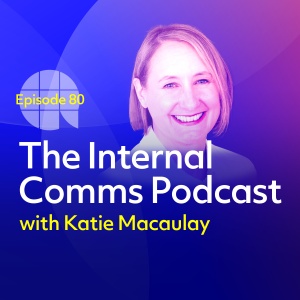
Episode 80 – The inside track on comms at Mercedes F1
May 3, 2023
“The days we fail are the days our competitors live to regret,” said the late, great Niki Lauda. And that’s what this episode of the Internal Comms Podcast is all about. Thi...

Episode 79 – Lifting the lid on comms consultancy
April 19, 2023
Ever considered what it takes to become an effective communications consultant? Then this week’s episode of The Internal Comms Podcast is for you. Host Katie Macaulay welcomes Si...

Episode 78 – Comms with courage
April 5, 2023
This week on The Internal Comms Podcast, host Katie Macaulay welcomes Audacity’s Jason Anthoine. Jason has spent three decades working in internal communication, employee experie...
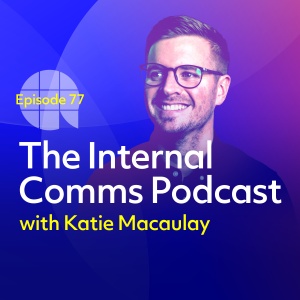
Episode 77 – Here for the culture
March 22, 2023
This week on The Internal Comms Podcast, host Katie Macaulay welcomes culture-chameleon Shane Hatton. Shane is many things – author, international speaker, trainer, leadership co...

Episode 76 – Employee experience: For the people by the people
March 8, 2023
This week on The Internal Comms Podcast, host Katie Macaulay welcomes Nicholas Wardle. Nicholas is Head of Employee Experience at Brand Experiences, and co-author of ‘Monetising ...

Episode 75 – Inside the world’s most famous corner shop
February 22, 2023
This week on The Internal Comms Podcast, host Katie Macaulay welcomes Sam Bleazard. Sam’s role as Employer Brand Content Producer takes him behind the scenes of ‘the world’s ...

Episode 74 – Culture with sticking power
February 8, 2023
The Internal Comms Podcast is back for Season 9! To kick off this season, we welcomed BizJuicer’s Andy Goram to the hot seat. Andy’s passion for building businesses ‘from t...

Season 8: In the rear view mirror
February 1, 2023
With Season 9 of The Internal Comms Podcast right around the corner, host Katie Macaulay has taken the opportunity to reflect on the wisdom and insight shared over our latest seaso...
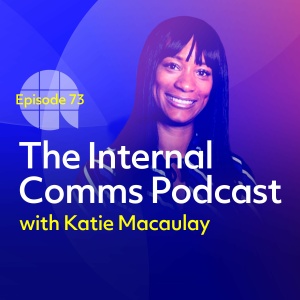
Episode 73 – Forging your own path
December 21, 2022
The season 8 finale features Jennifer Thomas, Head of Communications for the Data & Analytics branch of the London Stock Exchange Group. Born in London to Guyanese parents, Jennif...
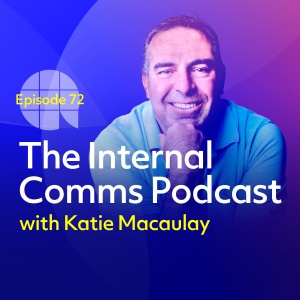
Episode 72 – Making your way to the top
December 7, 2022
Episode 72 of The Internal Comms Podcast sees host Katie Macaulay joined by Adrian Cropley, CEO and founder of Cropley Communication and the Centre for Strategic Communication Exce...

Episode 71 – Effective comms starts with knowing yourself
November 23, 2022
This week’s guest on The Internal Comms Podcast is Joanna Parsons, Head of Internal Communications & Culture at Teamwork. Joanna made Irish history as the first ever Head of Inte...
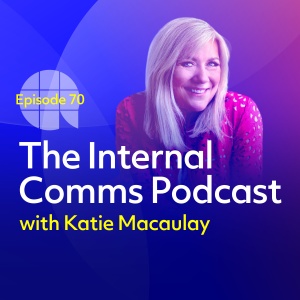
Episode 70 – Reaching across the aisle
November 9, 2022
Shelby Scarbrough, author of 'Civility Rules! Creating a Purposeful Practice of Civility', shares her deep insight and experience ‘reaching across the aisle’ on episode 70 of T...

Episode 69 – Measuring what matters – actions not feelings
October 26, 2022
Episode 69 of The Internal Comms Podcast sees IC heavyweight Mike Klein return to the hot seat. An internal and social communication consultant based out of Reykjavik, Mike is help...

Episode 68 – Host in the hot seat: Reflections on 250,000 plays
October 12, 2022
In this very special episode of The Internal Comms Podcast, the tables have turned. Katie Macaulay is in the hot seat, and AB’s Senior Content Editor Freddie Reynolds takes over ...
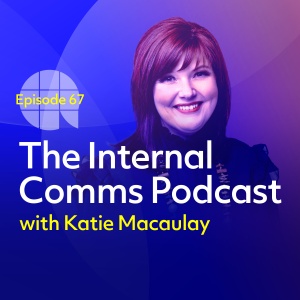
Episode 67 – The ABC of research: Ask, believe, change
September 28, 2022
In this episode of The Internal Comms Podcast, host Katie Macaulay invites qualitative research expert Mari Lee to sit in the hot seat. Mari’s specialism is in ‘development com...
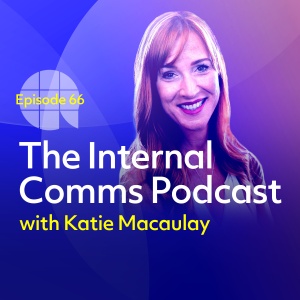
Episode 66 – Combatting IC isolation
September 14, 2022
The Internal Comms Podcast is back for what promises to be an incredible Season 8! In this kick-off episode, host Katie Macaulay welcomes ICology’s Vice President of Community an...

Season 7: The rewind episode
September 7, 2022
The countdown is on, and The Internal Comms Podcast will be returning from its summer break with Season 8 imminently. And while its eighth instalment promises wisdom unbound from a...

Episode 65 – Remote but not unreachable
June 22, 2022
In the final episode of season 7 of The Internal Comms Podcast, host Katie Macaulay speaks with Lily Goodman D’Amato, Delivery Trainer at US-based digital pharmacy Medly. Lily b...

Episode 64 – Releasing your inner sceptic
June 8, 2022
In the latest episode of The Internal Comms Podcast, host Katie Macaulay speaks with Martin Flegg, founder and co-owner of The IC Citizen internal communications consultancy. With...
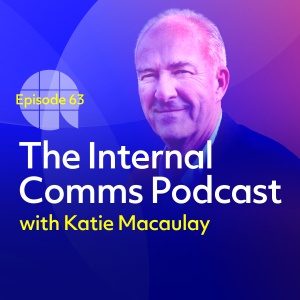
Episode 63 – Lessons in leadership
May 25, 2022
In episode 63 of The Internal Comms Podcast, host Katie Macaulay meets Mike Roe, who had a 28-year career in the police force and is now CEO of Tensense, a data insights company. ...
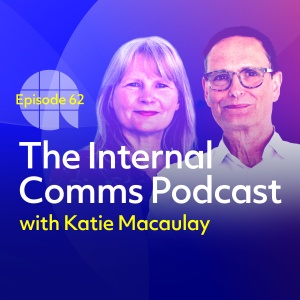
Episode 62 – Textbook IC: rewriting comms for a new era
May 11, 2022
In the latest episode of The Internal Comms Podcast, host Katie Macaulay speaks with the duo who wrote the book on internal communications – literally. Sue Dewhurst has worked i...

Episode 61 – Embracing the messiness of being human
April 27, 2022
In this week’s episode of The Internal Comms Podcast, host Katie Macaulay sits down with Victoria Dew, founder and CEO of Dewpoint Communications. Her firm is focused on helping ...
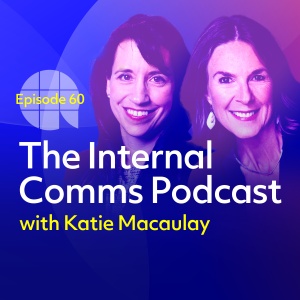
Episode 60 – How to have better conversations
April 13, 2022
In this week’s episode of The Internal Comms Podcast, host Katie Macaulay sits down with Jackie Stavros and Cheri Torres, co-authors of Conversations Worth Having, Using Apprecia...

Episode 59 – Strategy & IC: A masterclass in collaboration
March 30, 2022
In this episode of The Internal Comms Podcast, host Katie Macaluay looks into the dynamic between internal comms and strategy – at its best a symbiotic relationship that drives t...
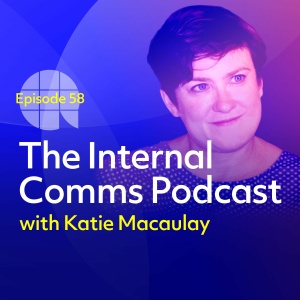
Episode 58 – The state of IC: what’s behind the numbers?
March 16, 2022
In episode 58 of The Internal Comms Podcast, we dissect the results of the latest State of the Sector report, the definitive global survey of the internal communication landscape, ...
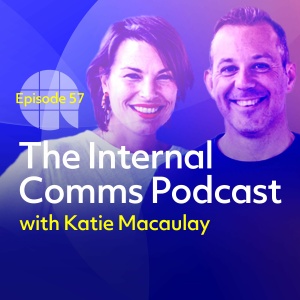
Episode 57 – Unboxing internal comms at IKEA
March 2, 2022
In episode 57 of The Internal Comms Podcast, listeners can take a peek inside the world of IC at IKEA, as host Katie Macaulay chats with a dynamic duo from the multinational furnit...
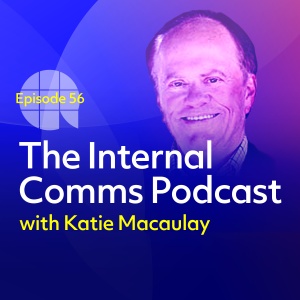
Episode 56 – IC at the sharp end
February 16, 2022
In this first episode of season 7 of The Internal Comms Podcast, host Katie Macaulay talks to Jim Shaffer, an internationally recognised business adviser, leadership coach, author ...
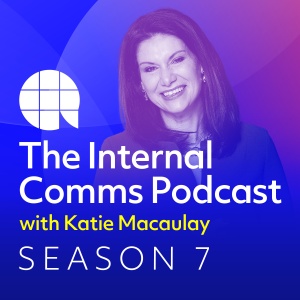
Leading Lights – Highlights From Season 6
February 9, 2022
Get ready to tune in to our next season of The Internal Comms Podcast. While Season 7 promises an amazing array of guests, this special episode highlights some of the best moments ...
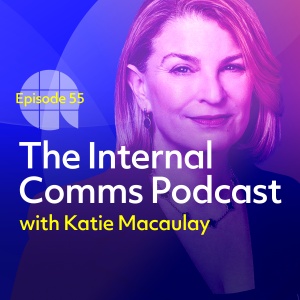
Episode 55 – Mission Possible
December 1, 2021
In the final episode of season 6 of The Internal Comms Podcast, host Katie Macaulay speaks to Sally Susman, Executive Vice President and Chief Corporate Affairs Officer at Pfizer. ...
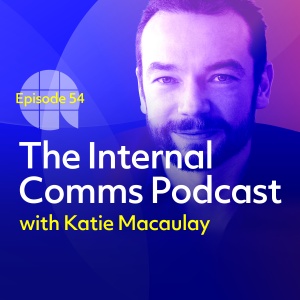
Episode 54 – Brain care: Mastering your mind
November 17, 2021
In the sixth episode of season 6 of The Internal Comms Podcast, host Katie Macaulay talks to Phil Dobson, founder of BrainWorkshops and author of The Brain Book: How to Think and W...

Episode 53 – Suicide Prevention: Reflecting on an award-winning campaign
November 3, 2021
***The content in this episode of The Internal Comms Podcast may be triggering for those who have experience of suicide.*** In the fourth episode of season 6 of The Internal Comms...

Episode 52 – How do you create comms with purpose?
October 20, 2021
In the fourth episode of season 6 of The Internal Comms Podcast, host Katie Macaulay catches up with Maliha Aqeel, Director of Global Communications and Digital Channels at Fix Net...
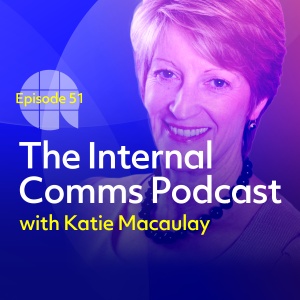
Episode 51 – Why are we here? How purpose and values drive healthy cultures
October 6, 2021
In the third episode of season 6 of The Internal Comms Podcast, host Katie Macaulay catches up with communications expert and IABC Fellow Jane Mitchell. Jane began her career with...

Episode 50 – A guru’s guide to internal podcasts
September 22, 2021
In the second episode of season 6 of The Internal Comms Podcast, host Katie Macaulay talks to Brian Landau, an authority in podcasting and expert on all things audio content creati...
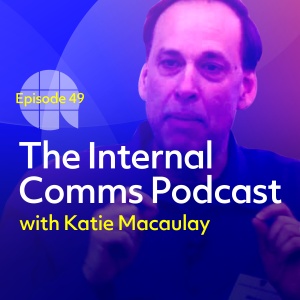
Episode 49 – Engagement: how it started, how it's going
September 8, 2021
In this first episode of season 6 of The Internal Comms Podcast, host Katie Macaulay talks to the father of employee engagement, organisational psychologist Professor William Kahn....
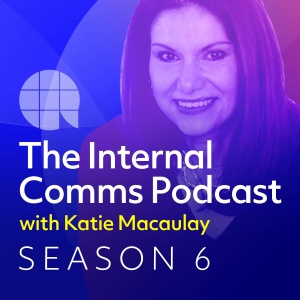
Industry experts – highlights from Season 5
September 1, 2021
The curtain is about to go up on the new season of The Internal Comms Podcast, with some fantastic guests joining host Katie Macaulay to talk about all things communication. For t...
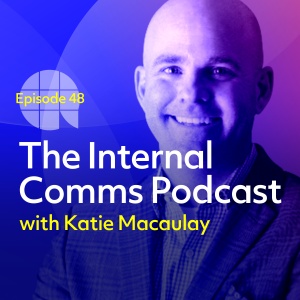
Episode 48 – Changing minds: using behavioural science in IC
May 12, 2021
It has always been Katie Macaulay’s goal for The Internal Comms Podcast to help improve the way organisations communicate with their people, and this week she does so by explorin...
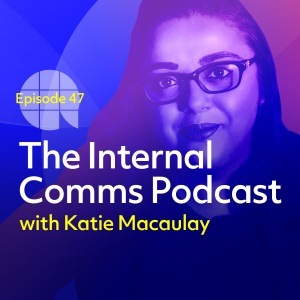
Episode 47 – Conversation with a comms rebel
April 28, 2021
Katie Macaulay’s guest this week is a leading light in efforts to advance the careers of under-represented groups in IC. Advita Patel is a qualified coach, mentor, public speake...
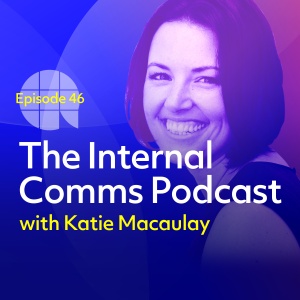
Episode 46 – Influential Internal Communication
April 14, 2021
This episode sees the return of the brilliant business communications strategist, international public speaker and podcast host Jenni Field. The immediate past chair of the Charte...
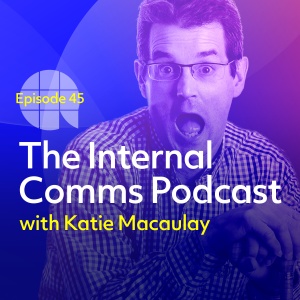
Episode 45 – Sharing the magic
March 31, 2021
The life and career of this week’s guest has been a literal roller coaster. Mark Webb fell into PR and media relations by chance, after spotting a job ad for the new Eurodisney ...

Episode 44 – How to prove your presence
March 17, 2021
Katie Macaulay’s guest for episode 44 of The IC Podcast is Canadian comms expert Prarthna Thakore. After beginning her career in Calgary and then moving to London, Prarthna has ...
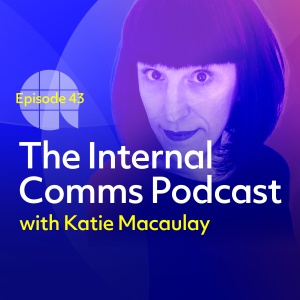
Episode 43 – Kate Jones on the state of our sector
March 3, 2021
Every year since 2008, internal comms pros have responded to the Gallagher State of the Sector report. Because it’s been running for 13 years, and because similar questions are a...

Episode 42 – Once Upon A Time In IC
February 17, 2021
Katie Macaulay kicks off Season 5 of The IC Podcast with a riveting conversation with business storytelling specialist Gabrielle Dolan. Gabrielle is a highly sought-after internat...

Looking back, looking forward: highlights from Season 4
February 10, 2021
With the new season of The Internal Comms Podcast just around the corner, we wanted to whet your appetite with a selection of the best bits from Season 4. For this special best-of...
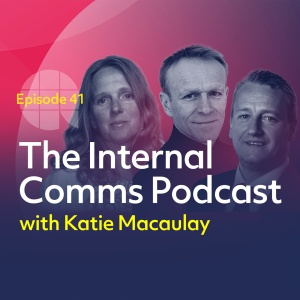
Episode 41 – At the heart of the crisis: NHS comms during Covid-19
December 23, 2020
The NHS has never been far from our hearts and minds over the last few months. As the national jewel in the UK’s crown, the National Health Service has battled many difficulties ...

Episode 40 – Founding fathers – building the first IC agency
December 17, 2020
What prompted the creation of the first IC agency back in 1964 and what convinced those first chief executives that they needed external help communicating with their employees? W...
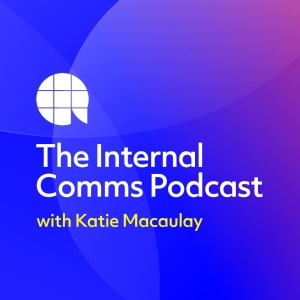
Coming soon in season 4
December 9, 2020
Coming soon in season 4 of The Internal Comms Podcast
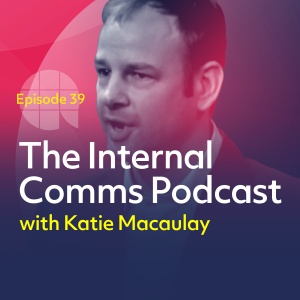
Episode 39 – Evidence-based IC
November 25, 2020
Recent research shows measurement is particularly challenging for many internal comms professionals. Katie’s guest on this episode of The Internal Comms Podcast is Benjamin Ellis...

Episode 38 – The secret thoughts of successful people
November 11, 2020
Amid the turmoil of 2020, with IC pros thrown into the spotlight as we strive to keep colleagues informed and connected, it’s not surprising that many of us are feeling a degree ...
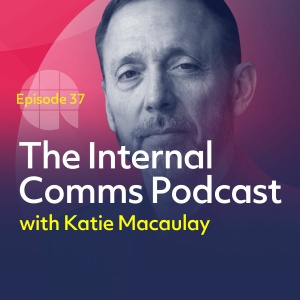
Episode 37 – The art of negotiation
October 28, 2020
If you want to take your communication skills to the next level, then this episode of The Internal Comms Podcast is for you. Katie’s guest is a formidable negotiator and expert ...

Episode 36 – Navigating the digital landscape
October 14, 2020
In this episode of The Internal Comms Podcast we meet digital expert Frank Wolf. Frank spent seven years as a business consultant at Accenture. Then at T Mobile, he was responsible...

Episode 35 – How to do less, but do it better
September 30, 2020
In this episode of The Internal Comms Podcast we meet Steve Crescenzo, a witty, straight-talking and charismatic speaker, workshop leader and coach from Chicago, USA, who has spent...

Episode 34 – Cross-cultural comms
September 16, 2020
The Internal Comms Podcast is now in its fourth season – and to kick it off Katie sat down with Tasneem Chopra for some honest and open conversation. The self-styled “professi...
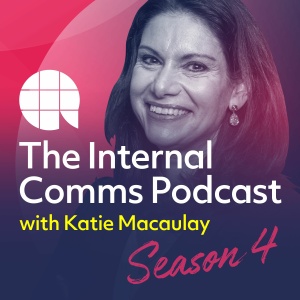
Choice cuts: highlights from Season 3 of The IC Podcast
September 2, 2020
Before the curtain lifts on Season 4 of The IC Podcast, we wanted to leave you with some food for thought from Season 3. And what a season it was; we had a whole host of remarkabl...
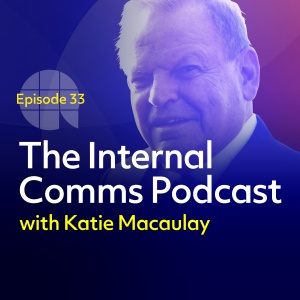
Episode 33 – IC’s founding father
July 8, 2020
The goal of this podcast is to bring you meaningful, in-depth conversations with people who are helping to shape the world of internal communication: practitioners, leaders, author...
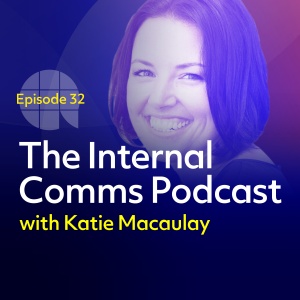
Episode 32 – Leadership in unprecedented times
June 24, 2020
President of the Chartered Institute of Public Relations (CIPR), Jenni Field has more than 16 years’ experience in communications. She is the founder and director of Redefining C...
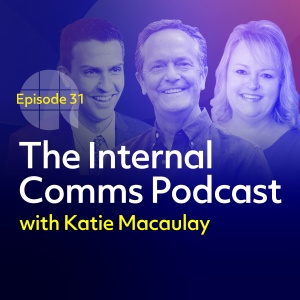
Episode 31 – What's next? IABC roundtable on the impact of Coronavirus
June 10, 2020
The Internal Comms Podcast has gone truly global with our latest episode featuring three speakers from three countries. In episode 31 Katie tables a roundtable discussion with Jen...

Episode 30 – Your biggest, best, boldest self
May 27, 2020
Chief Executive of the Office for Nuclear Regulation (ONR), Adriènne Kelbie has an exceptional understanding of the true power of communication and engagement. The first woman to ...

Episode 29 – Crisis communication at the coalface
May 13, 2020
Katie’s guest this week is someone who is no stranger to crisis communication. Amanda Coleman was the Director of Corporate Communication at Greater Manchester Police when, on M...
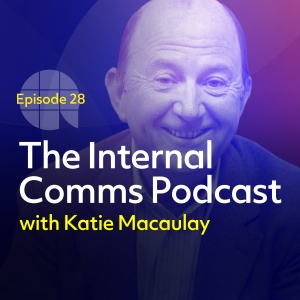
Episode 28 – The Godfather of IC
April 29, 2020
Katie’s guest this week is one of the world’s leading authorities on internal comms and the management of change: Bill Quirke. As managing director of IC consultancy Synopsis,...
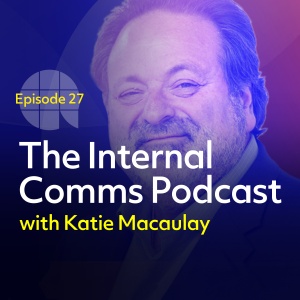
Episode 27 – Stepping up in a Crisis
April 14, 2020
This week Katie speaks to renowned communicator Shel Holtz. As listeners continue to grapple with keeping workforces informed, galvanised and feeling connected during the corona cr...
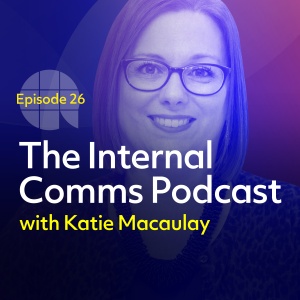
Episode 26 – How to thrive in IC (Part II)
April 1, 2020
This episode is recorded as the majority of the UK is in lockdown while the country attempts to flatten the curve of the COVID-19 pandemic. Katie Macaulay’s guest, Rachel Miller...
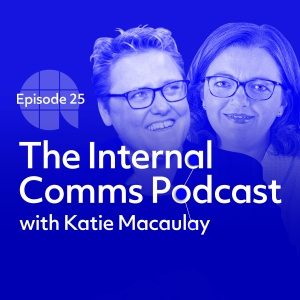
Episode 25 – Crisis Communications: Covid-19 Special
March 25, 2020
Katie Macaulay recorded this special episode on Friday 20 March 2020 in response to the rapidly developing situation surrounding the Covid-19 pandemic. Her guests to talk all thin...
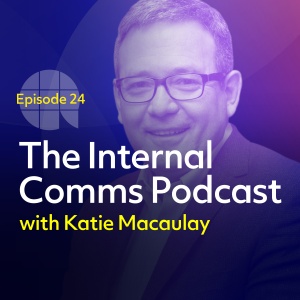
Episode 24 – A view from the top
March 18, 2020
In this episode of The Internal Comms Podcast, Katie puts her first CEO in the hotseat: Marc Barone. Marc is chief executive for continental Europe at AECOM. This Fortune 500 comp...

Episode 23 – Courage, confidence and communication
March 4, 2020
In this episode of The Internal Comms Podcast Katie talks to one of world’s most qualified communicators, Priya Bates, from Canada. Priya has an Accredited Business Communicator...
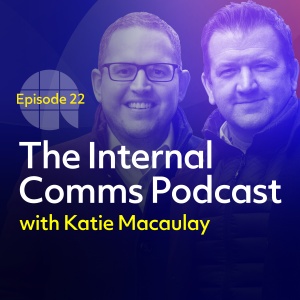
Episode 22 – State of the Sector
February 19, 2020
State of the Sector is the longest-established and most in-depth survey of the internal communication profession, based on responses from more than 1,000 professionals around the w...
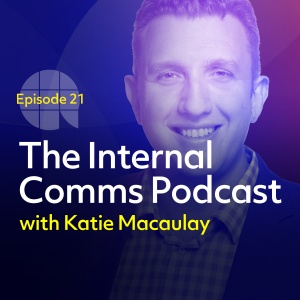
Episode 21 – The cheerleader for IC
February 5, 2020
During Seasons One and Two we covered a lot of ground in IC and beyond. As we begin Season Three, brace yourself for more fascinating insights as we delve into the very heart of co...
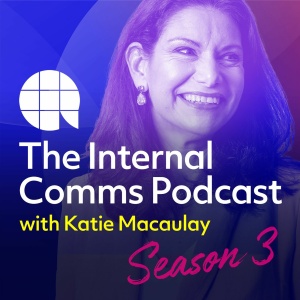
The highlight reel – nuggets of wisdom from Season 1 and 2 of The IC Podcast
January 29, 2020
Since the launch of The Internal Comms Podcast, host Katie Macaulay has interviewed more than 20 fascinating guests from the world of IC and beyond. Now, as we gear up for Season ...
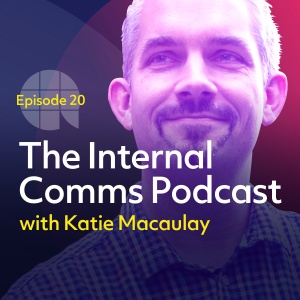
Episode 20 – Advocacy in action
December 18, 2019
Katie’s guest this week is Keith Lewis, UK Social Media and Social Business Manager for Zurich Insurance – one of the world’s largest insurance groups with 55,000 employees i...

Episode 19 – The appliance of neuroscience
December 4, 2019
Katie Macaulay’s guest this week is a neuroscientist with extensive experience in the field of organisational change. Hilary Scarlett began studying the brain in 2009 after read...
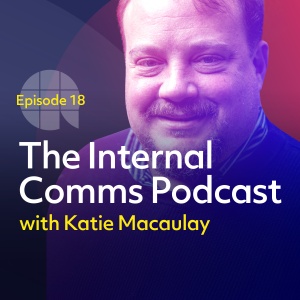
Episode 18 – Editing organisations
November 20, 2019
In this episode we get up close and personal with someone who helps improve the way we communicate at work. Mike Klein worked as a political consultant in the US, but for the past...

Episode 17 – Black Belt Thinking
November 6, 2019
As individuals, this week’s guests have impressive CVs. Sue Dewhurst is an experienced internal communicator who, for many years, has been training and coaching thousands of lea...
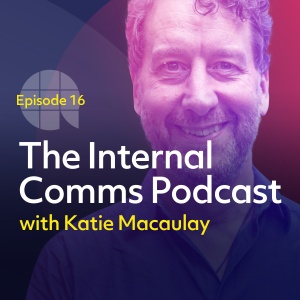
Episode 16 – A Passage to India
October 23, 2019
With this podcast now reaching listeners in 50 countries worldwide, host Katie Macaulay has chosen to go international for this episode. Her guest is creative services entrepreneu...
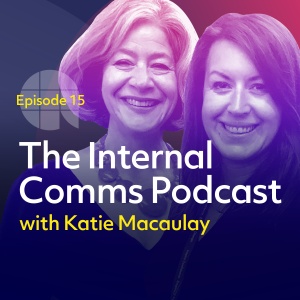
Episode 15 – The Power of Two
October 8, 2019
This week, Katie meets Claire Hyde and Louise Wadman, joint heads of IC at KPMG UK. Possibly the most senior IC job share in the country, Claire and Louise have more than 45 years...

Episode 14 – How to start a movement
September 24, 2019
Katie’s guest this episode is Nita Clarke – whose services to employee engagement have earned her an OBE from the Queen. Nita has a long and fascinating career. She co-authore...

Episode 13 – A check-up with the IC doctor
September 11, 2019
The Internal Comms Podcast is back with a new series of fortnightly conversations with leading lights from the world of internal communications, engagement and leadership. AB Mana...
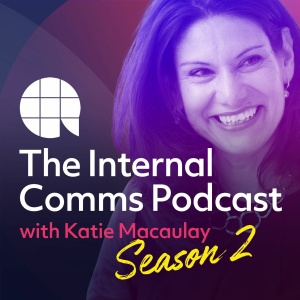
Season 02 Trailer
September 6, 2019
Season two of The Internal Comms Podcast is almost here!
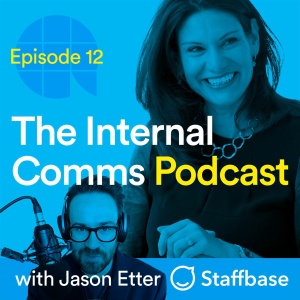
Episode 12 – Listen and learn: insights from 30 years in IC
July 24, 2019
In this extra special bonus episode of The Internal Comms Podcast, the tables are turned on Katie as she takes the spotlight as an interviewee. Posing the searching questions is J...

Episode 11 – Putting the soul back into Patisserie Valerie
June 25, 2019
For this special bonus episode of The IC Podcast, Katie interviewed Paolo Peretti, Managing Retail Director of Patisserie Valerie, in front of a live audience at AB Thinks Live, ou...
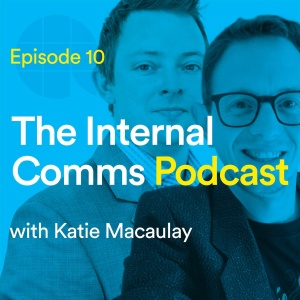
Episode 10 – Internal comms at the sharp end - recorded at IoIC live
May 21, 2019
For the final episode of season one, Katie Macaulay travels to Bath for IoIC Live and interviews two of the conference’s speakers, Martin Fitzpatrick and Matt Batten. Both Marti...

Episode 09 – How to win colleagues and influence people
May 7, 2019
Social influencer marketing is a new and rapidly growing means of getting your message out to your audience. It’s changed the face of advertising and has everyone from up-to-the-...

Episode 08 – The Joy of Work
April 23, 2019
Katie’s guest this week is an extremely versatile communicator. In his day job as European Vice President of Twitter, Bruce Daisley has overseen the development of one of the wor...
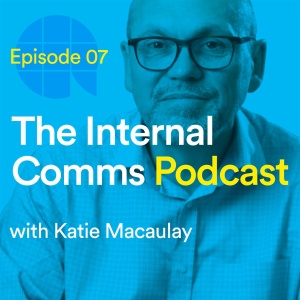
Episode 07 – What social purpose (really) means
April 9, 2019
Running the UK’s largest retail and financial services network with more branches than all of the UK’s banks and building societies put together, the Post Office is at the hear...

Episode 06 – The craft of communication
March 27, 2019
In episode six, Katie travels beyond the boundaries of internal comms to find out how to write more engagingly, tell better stories and use humour to deliver your message. And who ...
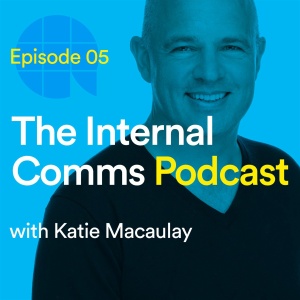
Episode 05 – Learning comms lessons from PR
March 13, 2019
In episode five, Katie aims to find out what internal communications can learn from external communications. So she sits down with ‘mister public relations’, Stephen Waddington...
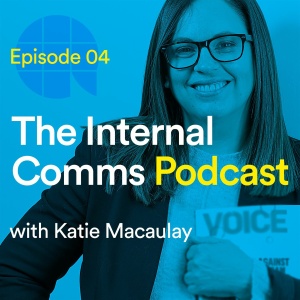
Episode 04 – What it means to be the voice of IC
February 27, 2019
The Institute of Internal Communication (IoIC) is the voice of the IC profession – dedicated to strengthening confidence, credibility and community. And on 12 March, the IoIC cel...
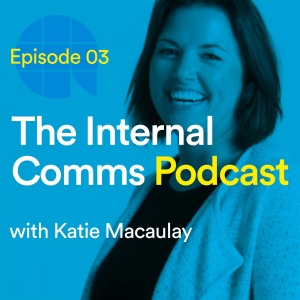
Episode 03 – What the State of the Sector report means for IC
February 13, 2019
Episode three lands as Gatehouse’s latest State of the Sector report is published. Katie invites Jenni Field, a tireless, high-profile personality of the IC landscape, to discus...
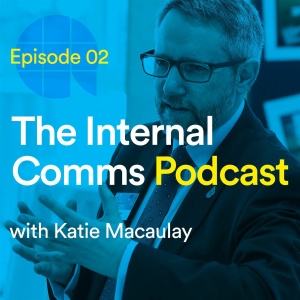
Episode 02 – What it takes to be an IC leader
January 30, 2019
Even if you’re only vaguely familiar with internal communications, Katie’s guest in episode two will no doubt be a name you recognise. In a career spanning 30 years, Russell G...

Episode 01 – How to thrive in IC
January 16, 2019
In the first episode of The Internal Comms Podcast, Katie meets Rachel Miller – a prolific blogger, educator, keynote speaker and one of the most respected voices in internal com...
